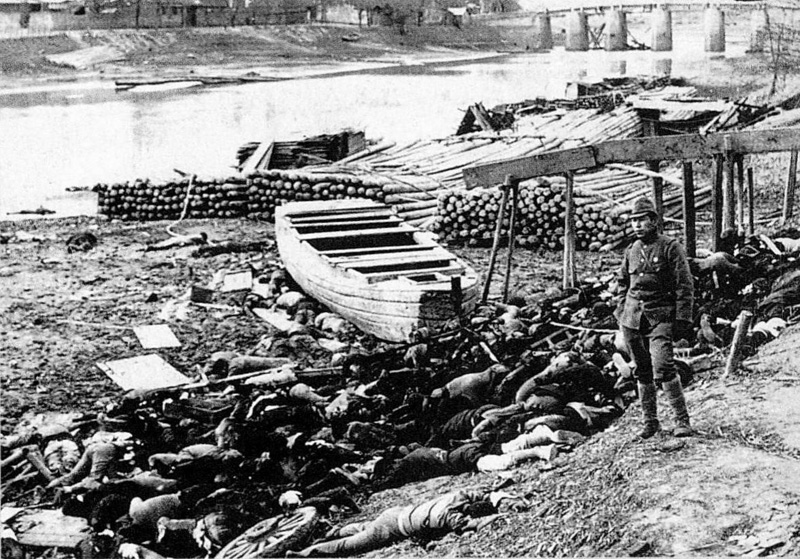 |
| Nanking bodies |
On July 7, 1937, Japanese forces attacked a town called Wanping in northern China near Beijing (Peking) in what came to be called the Marco Polo Bridge incident. On August 13 they attacked Shanghai, China's major port and financial center. This was the beginning of the Sino-Japanese War, which became part of World War II in Asia.
Japan boasted that China would surrender within three months. However, Chinese troops defended Shanghai heroically for three months before falling back, opening the road to Nanjing, China's capital. Meanwhile, the Chinese had moved their capital to Chongqing (Chungking) in Sichuan (Szechwan) province up the Yangzi (Yangtze) River.
Nanjing fell to Japanese troops on December 13, 1937. For the next eight weeks the civilians and surrendered Chinese troops in the city were subjected to monstrous barbarity perpetrated by over 50,000 Japanese officers and soldiers.
  |
The world knows it as the rape of Nanjing and the Chinese call it the great Nanjing massacre. The massacre was condoned by the high command and the commander of Japanese forces in Nanjing, Prince Asaka Yasuhito, uncle of Emperor Hirohito.
Soldiers were encouraged to commit the most horrendous atrocities and competed to kill the most people in the least time. Babies were bayoneted, and no female escaped gang rape, sexual torture, and death. All Chinese prisoners of war were massacred. The city was thoroughly looted, and large sections were burned down.
The only help for the desperate victims came from several Americans and Europeans who selflessly chose to remain in the city. They formed the International Committee for the Nanjing Safety Zone and established an area called the International Safety Zone around the campus of Nanjing University, the Ginling Women's Arts and Science College, the U.S. embassy, and some Chinese government buildings.
 |
| Babies were bayoneted |
These Western men and women stood up to the crazed Japanese soldiers, often risking their own lives. One of the bravest was a German businessman and member of the Nazi Party, John Rabe
He was so admired by the Chinese that they called him the "Buddha of Nanjing." Others later called him the Oskar Schindler of Nanjing. Another was Wilhemina Vautrin, head of the education dsepartment of the Ginling Women's College.
She protected thousands of women from Japanese soldiers, which won her accolades as the "Living Goddess of Nanjing." There were many others who worked valiantly and at enormous personal risk to protect the Chinese and who kept diaries of the horrific events.
   |
The worst was over by the spring of 1938, and Japanese authorities began damage control in an attempt to prevent international outrage. One outcome of the rape of Nanjing was the creation of a vast network of military brothels staffed by several hundred thousand young women from Korea, China, Taiwan, and later the Philippines and Indonesia, who were kidnapped and forced to serve as sex slaves to the Japanese soldiers so that they would be less likely to rape women in conquered territories.
These victims were called "comfort women
 |
| Comfort women |